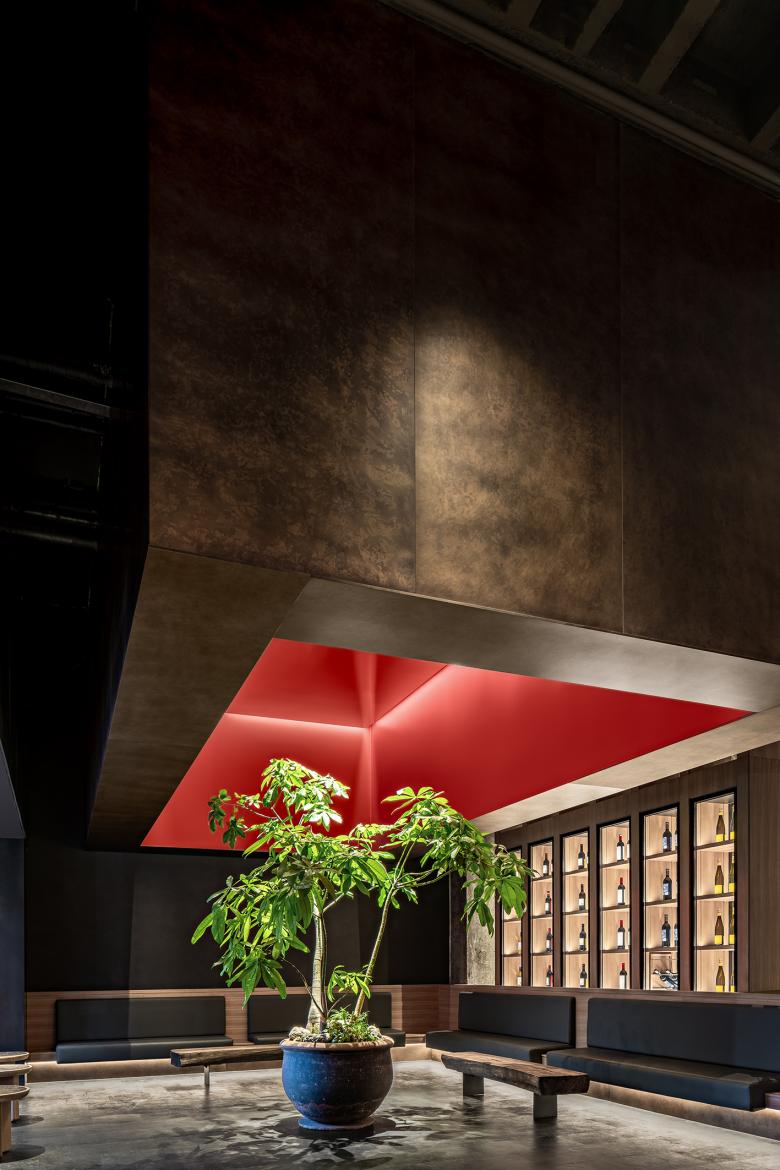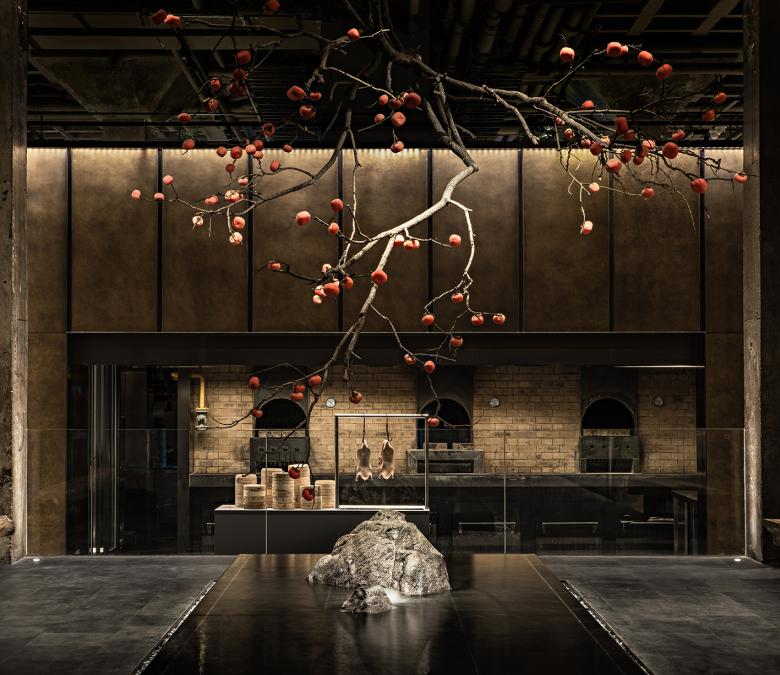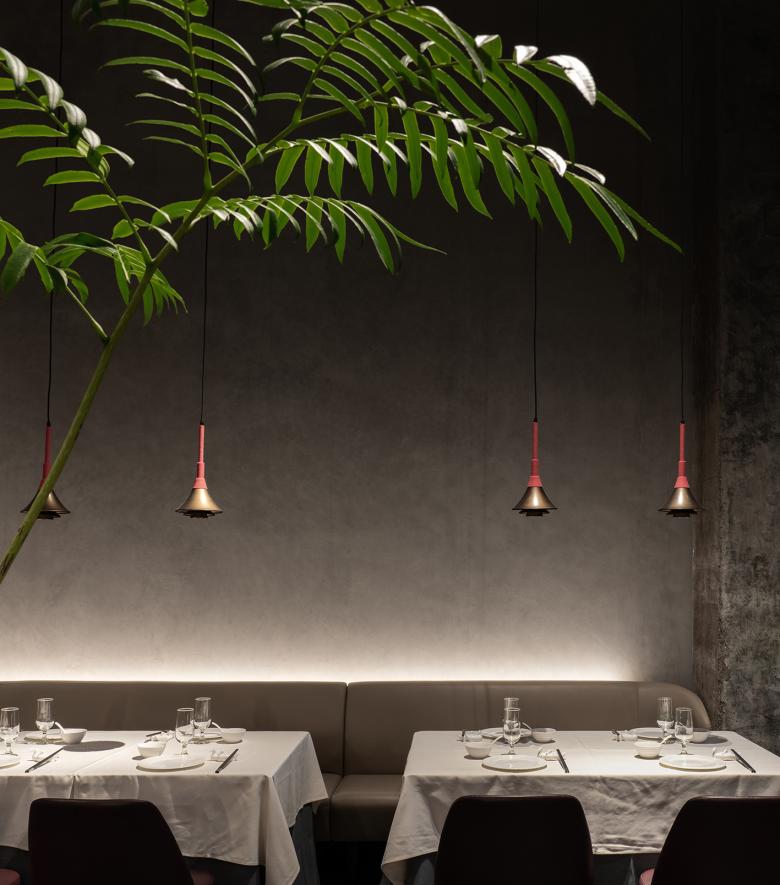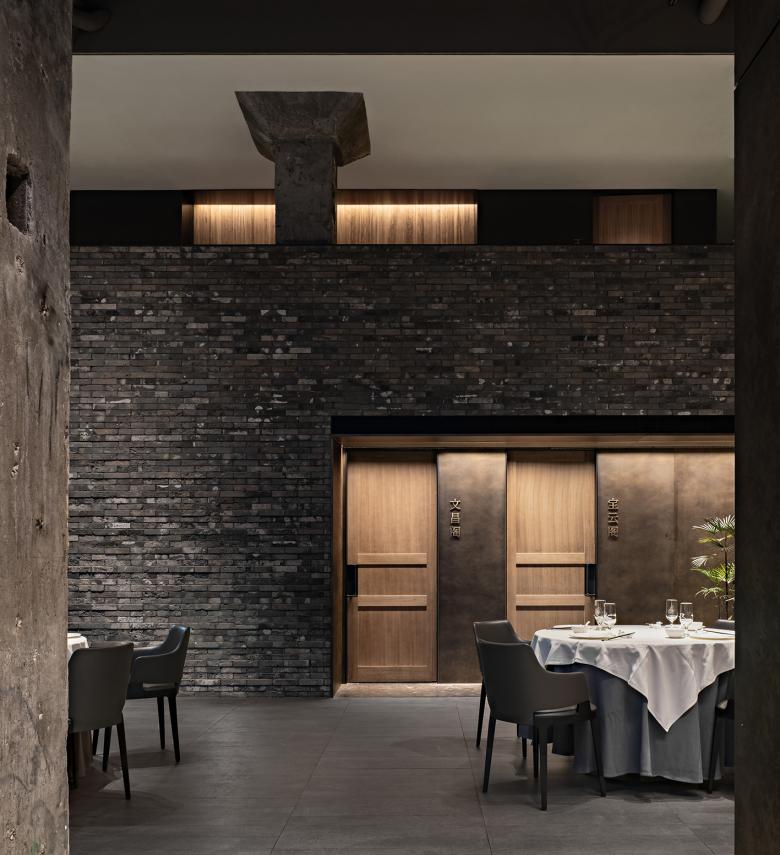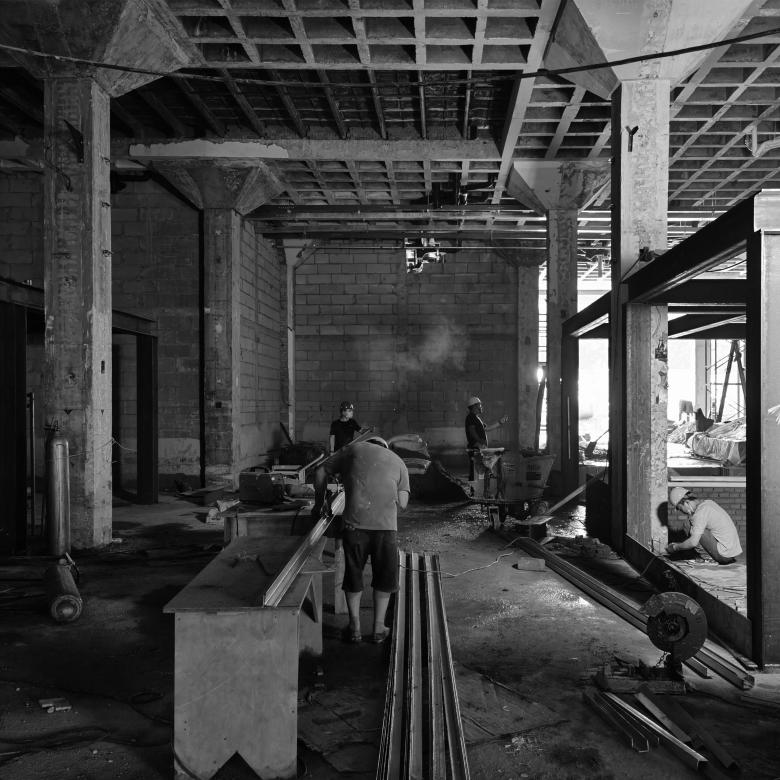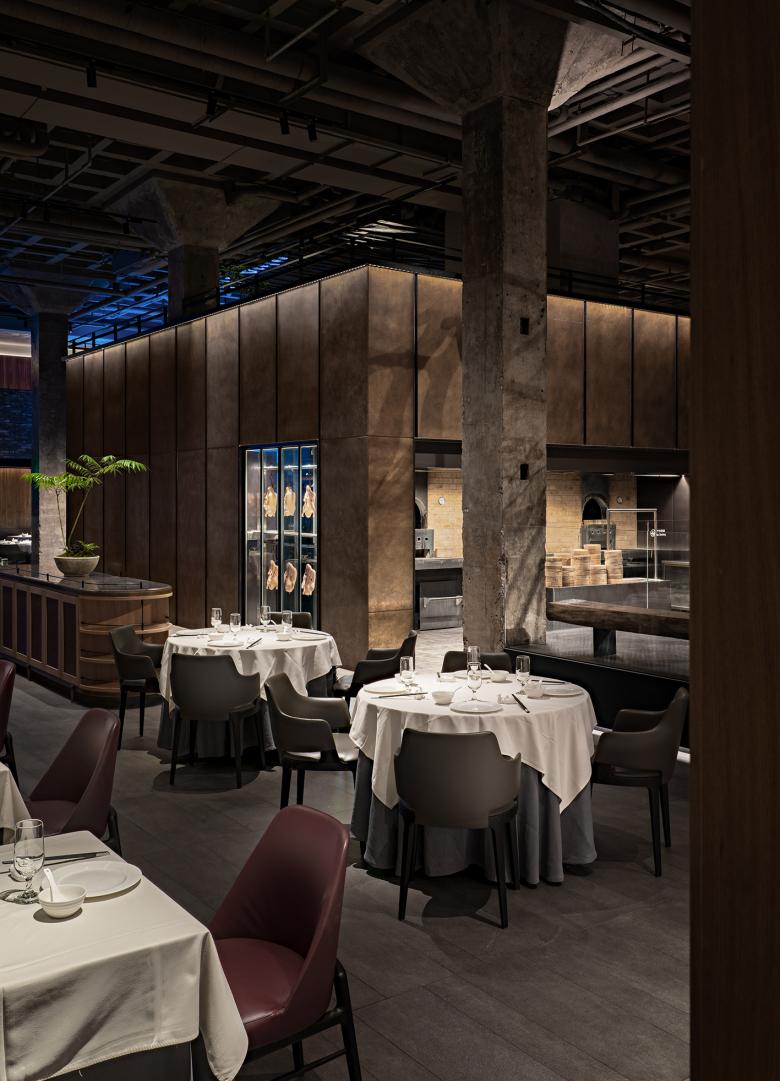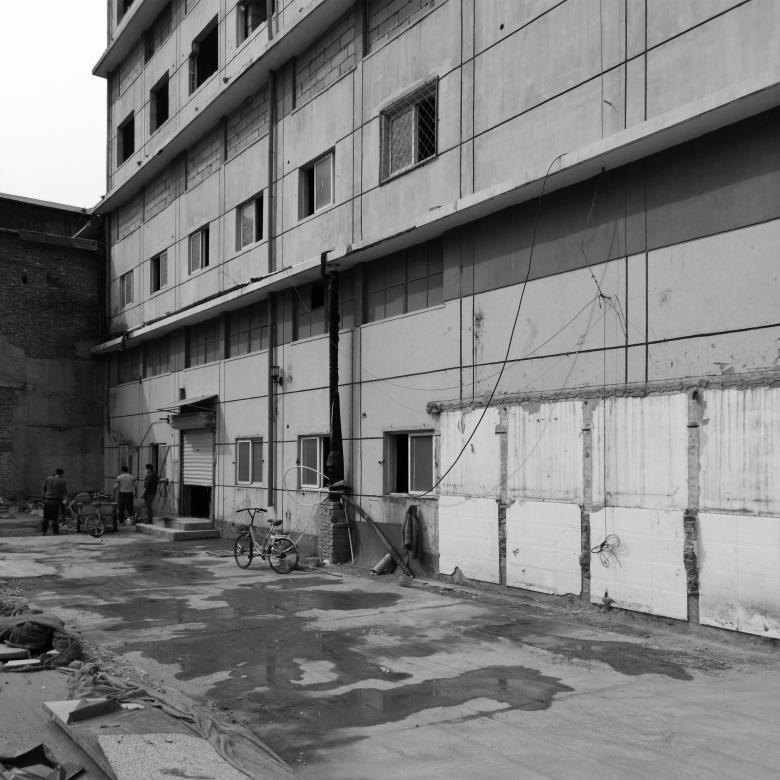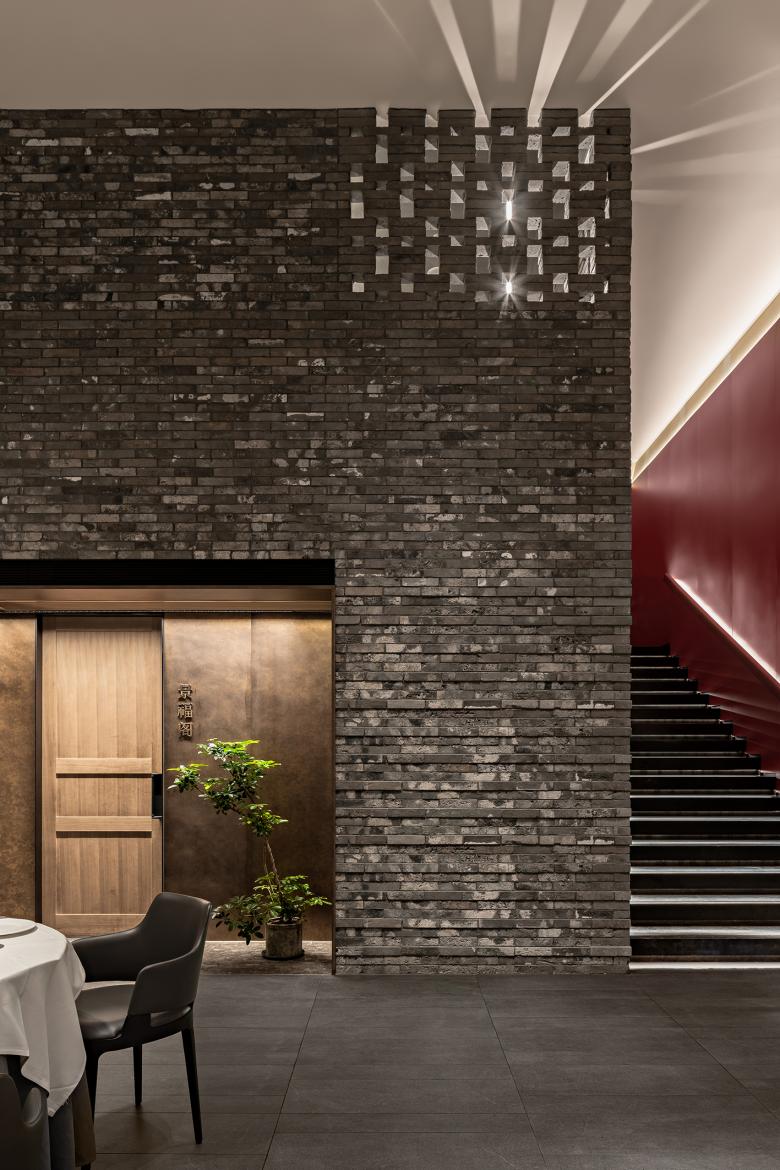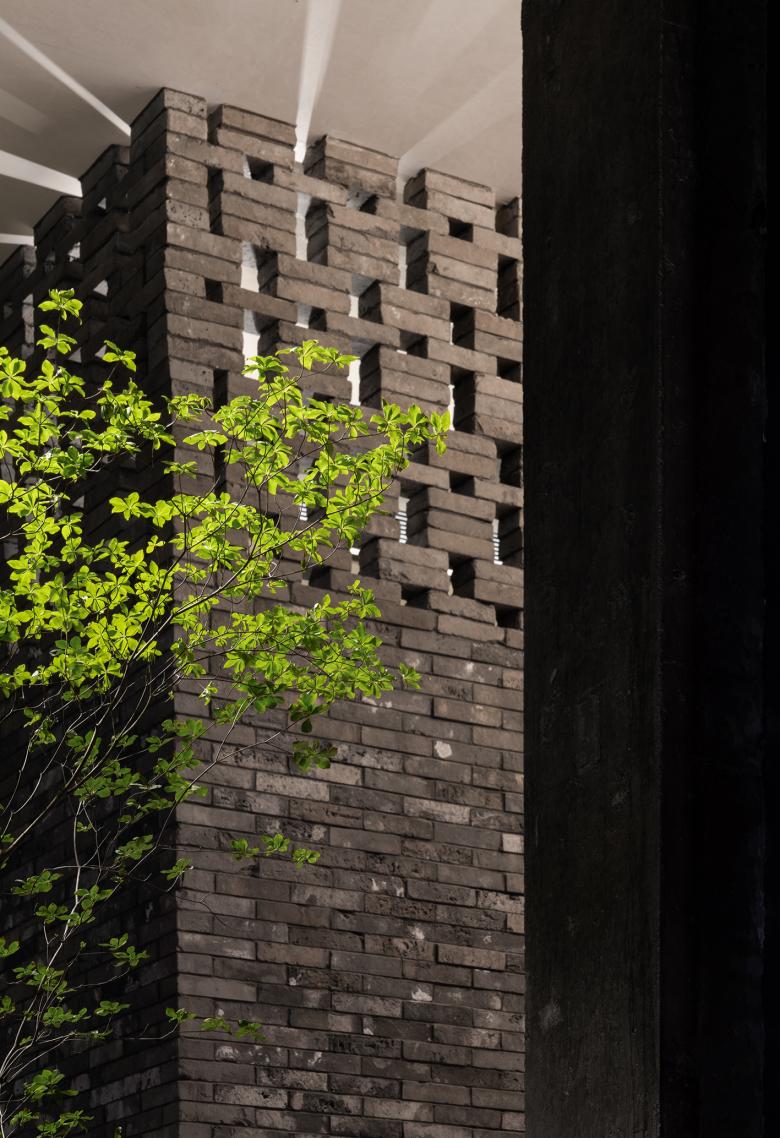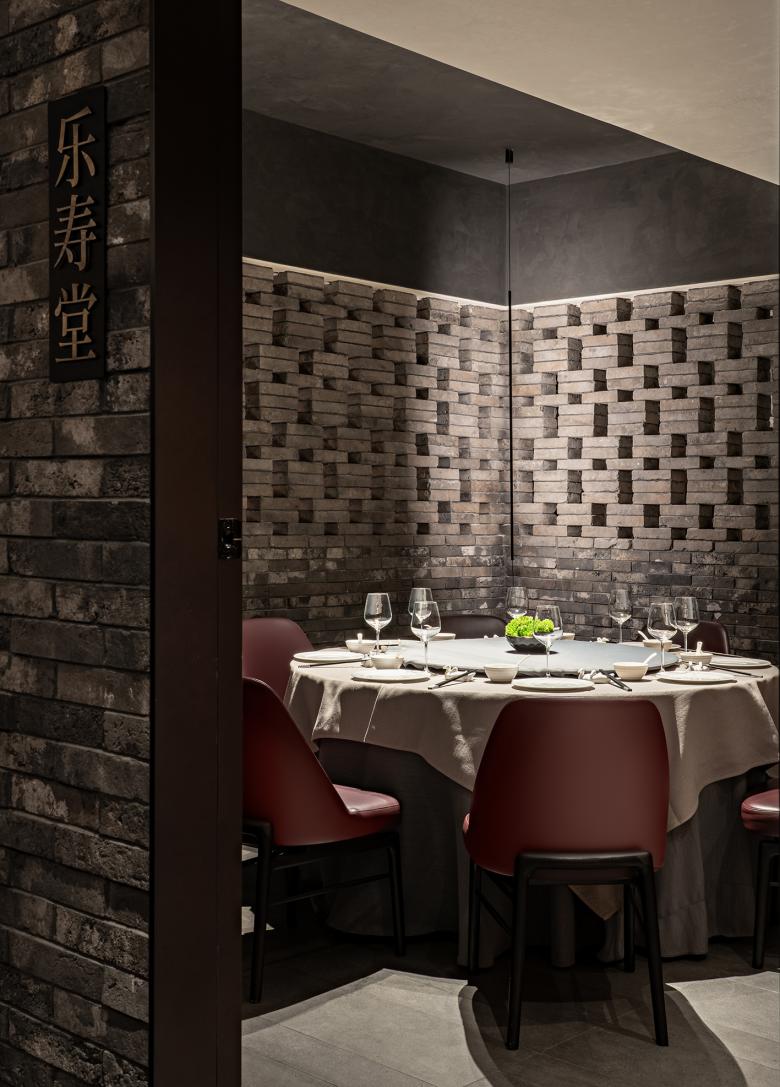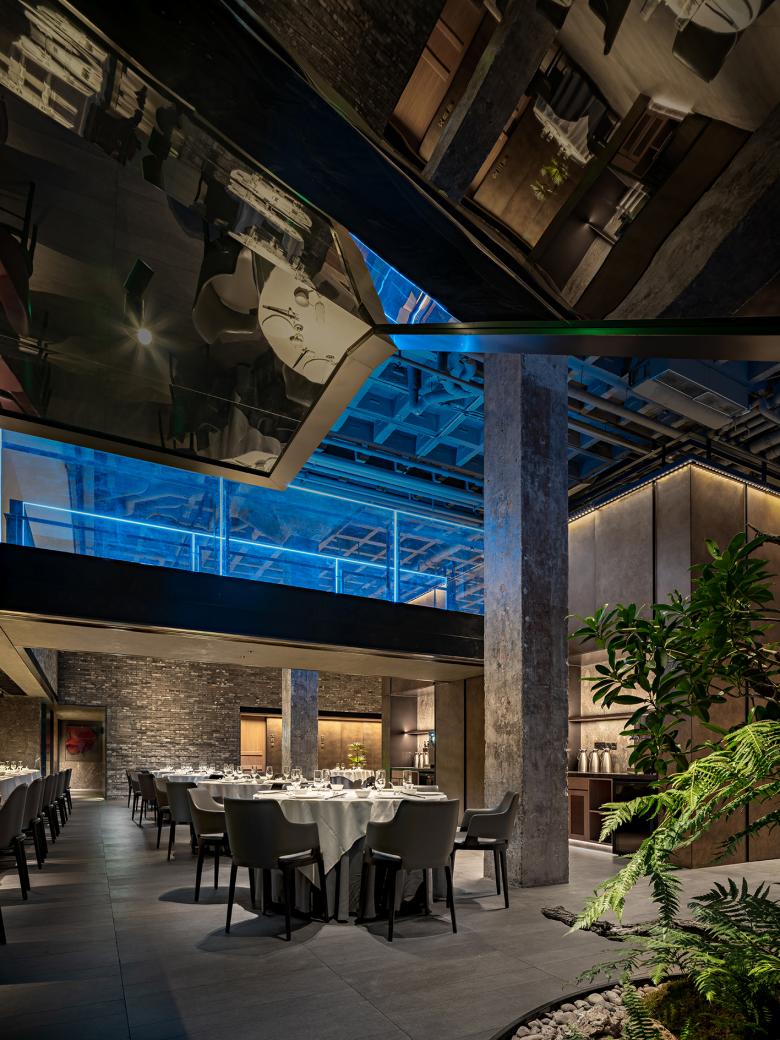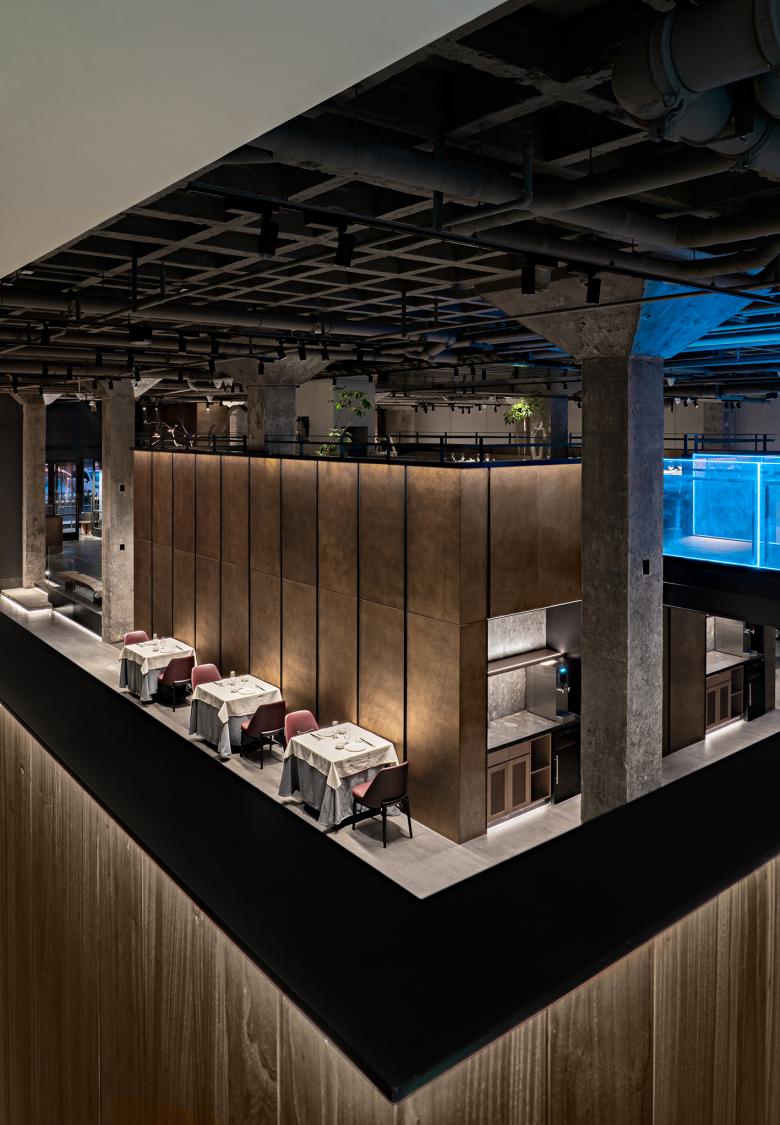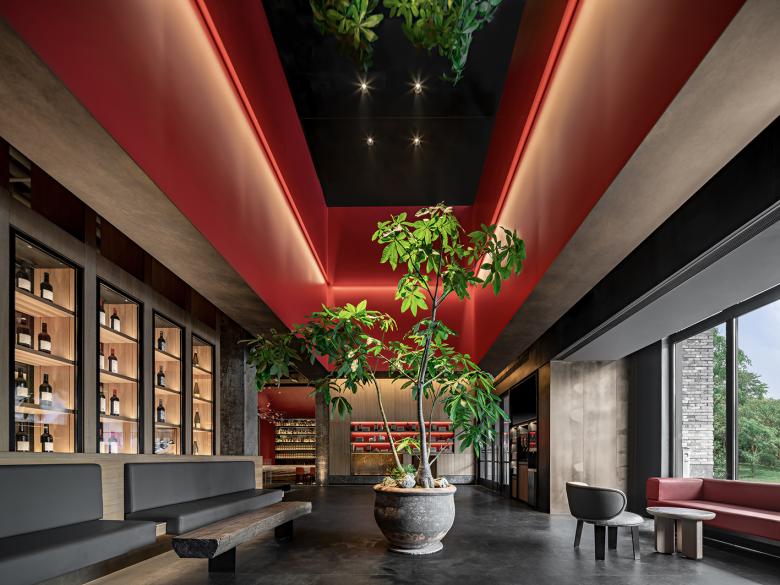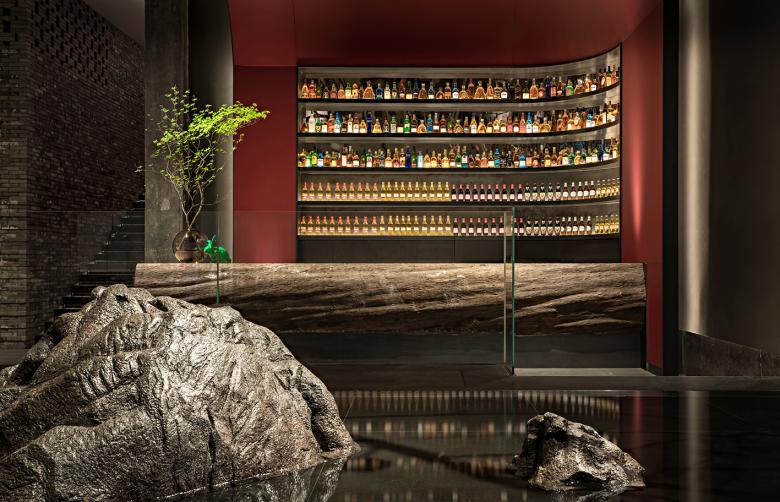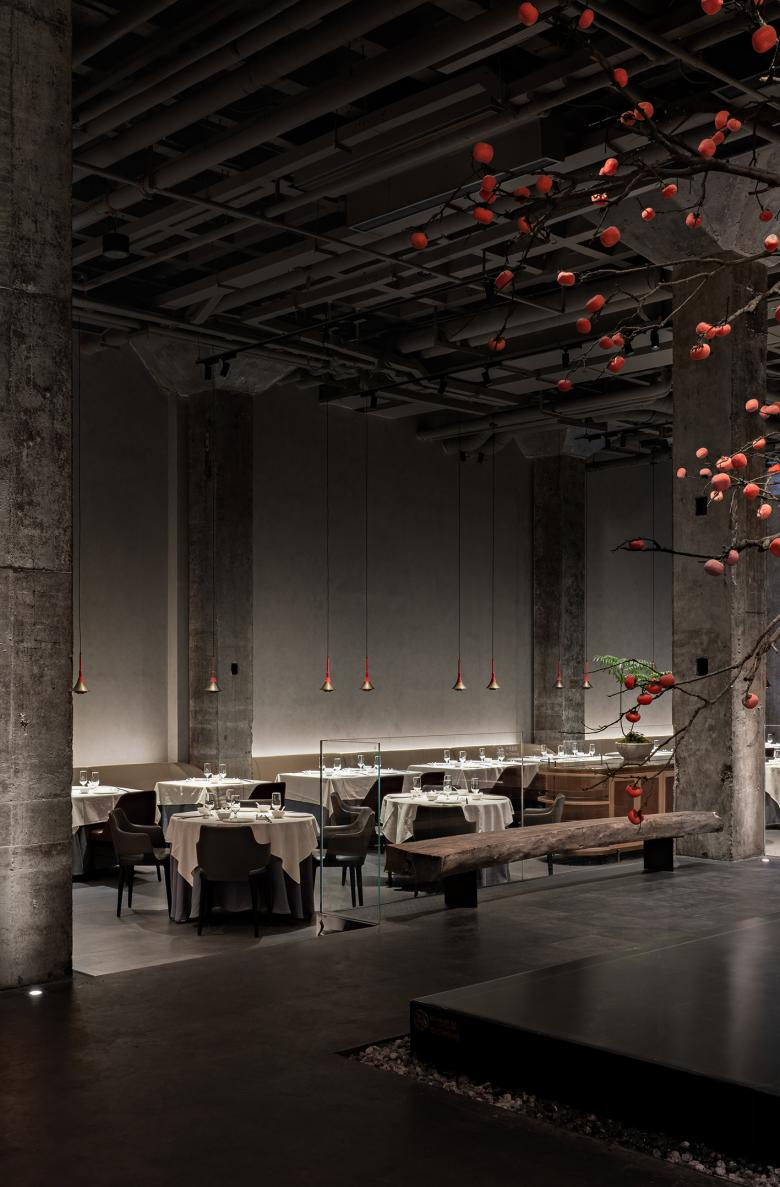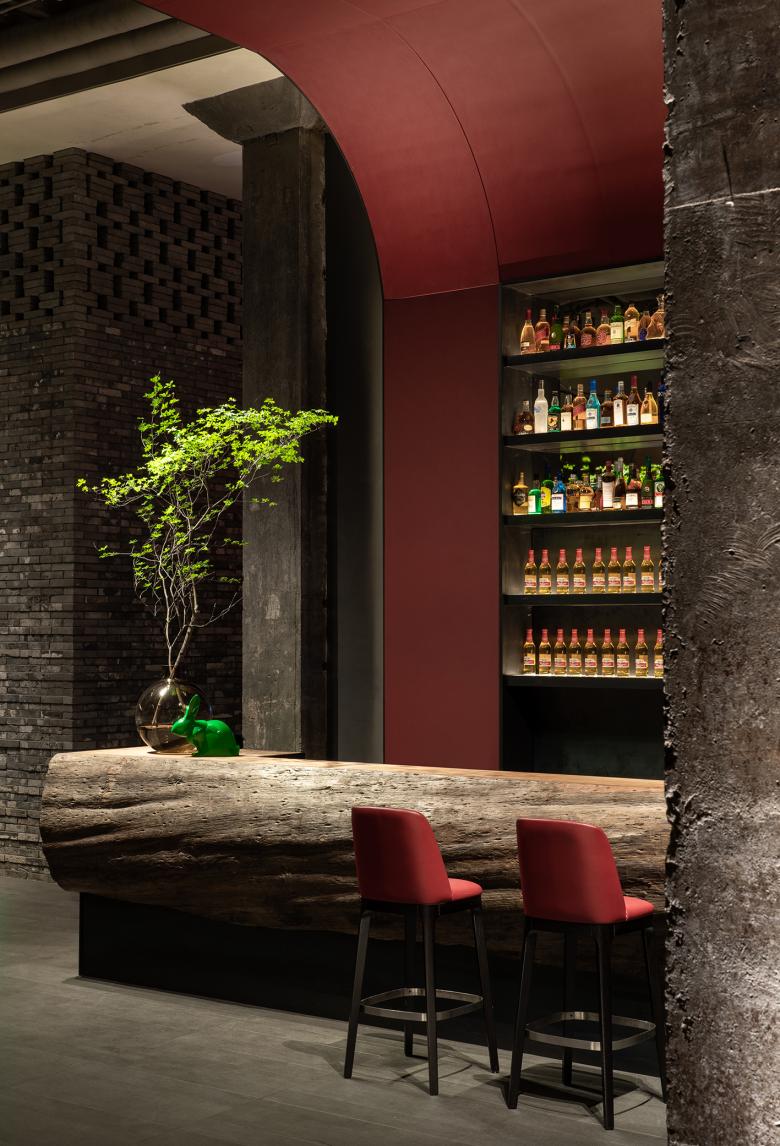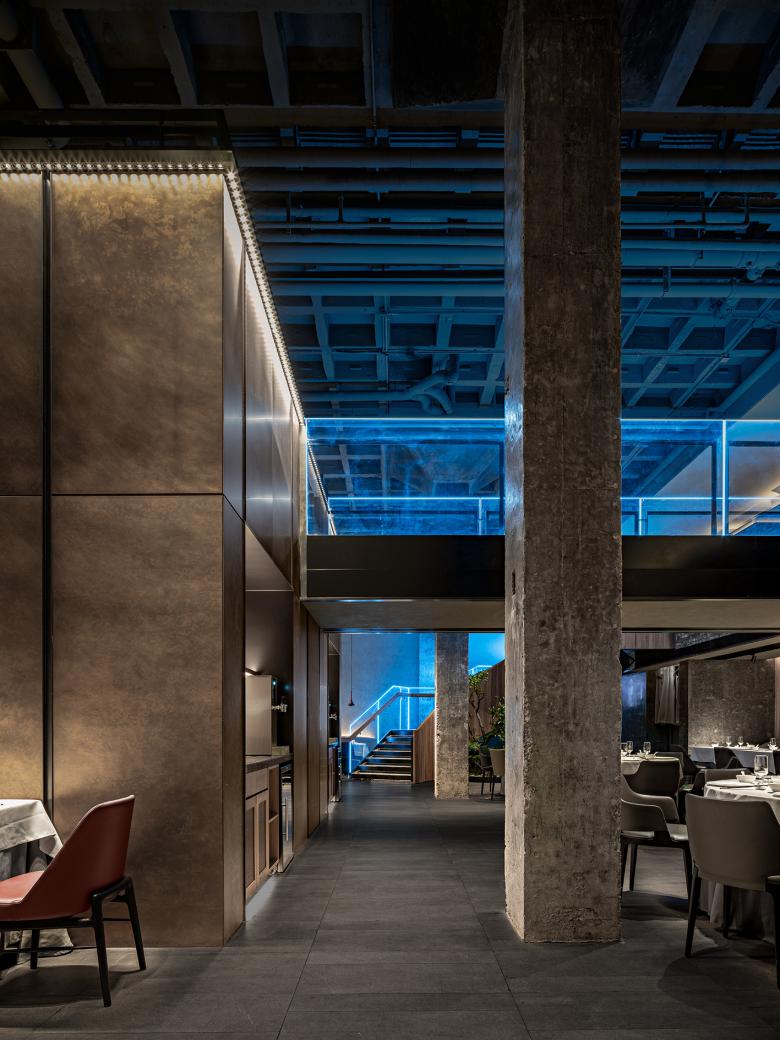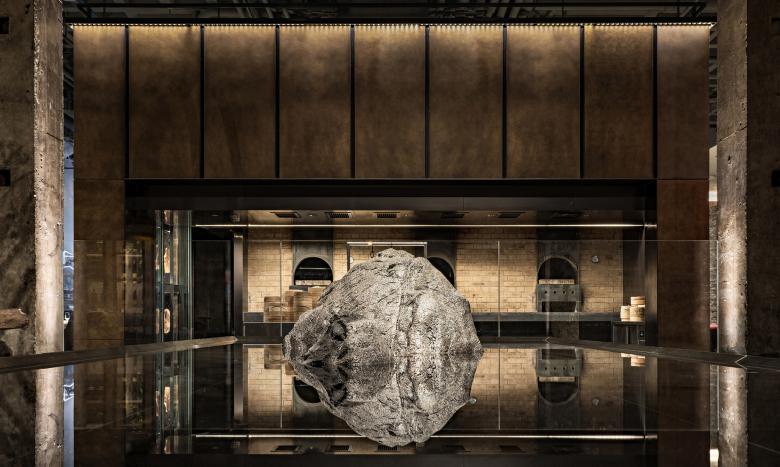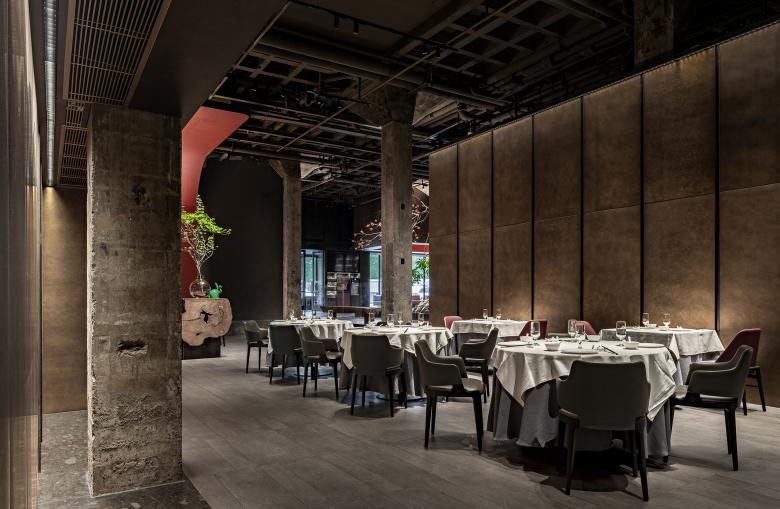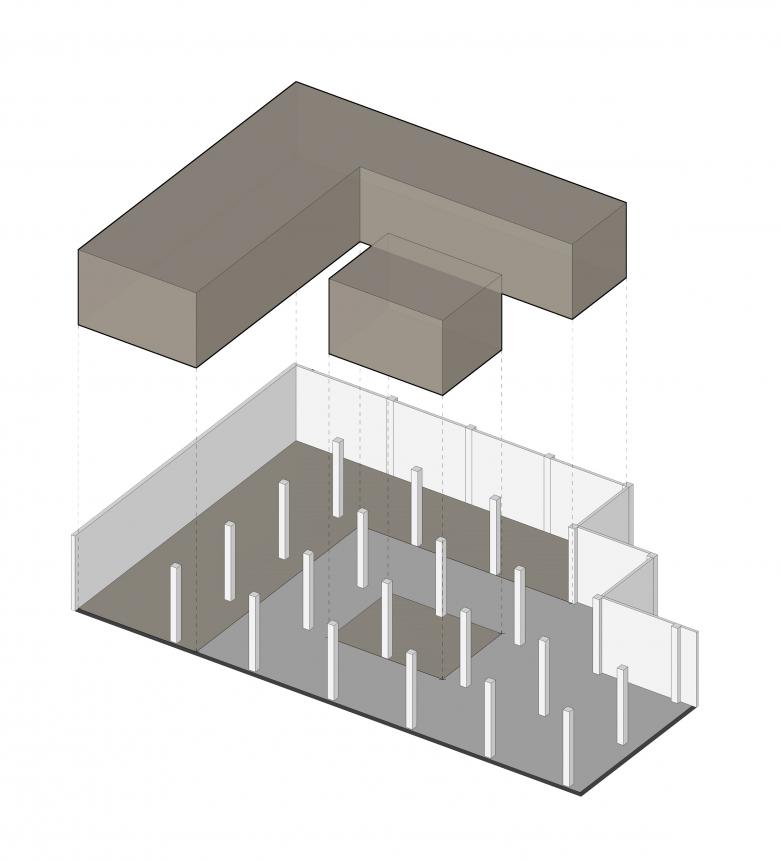Siji Minfu Restaurant in Maliandao
Beijing, 中国
- 位置
- Beijing, 中国
- 年份
- 2021
- 团队
- Interior design: IN.X, Designer: Wu Wei, Design team: Liu Chenyang / Jia Qifeng / Li Yan, Interior furnishings: Song Jiangli / Jin Shengxu / Ying Zheguang, Lighting design: Zhu Haiyan, Project planning: LELE Brand Strategy
In 1981, the original building of Siji Minfu Restaurant (Maliandao) was built at the northwest intersection of Honglian Road and Maliandao Hutong, which served as a warehouse for paper products. It adopts the beamless floor structure is commonly seen in the industrial age—that is, the floor load is directly transmitted to the foundation through the columns. This type of structural system has been widely used in industrial buildings, especially in the form of warehouses.
In the following 40 years, the building has changed hands several times, and its function is no longer known during the period. Until 2020, when the new site of Siji Minfu was handed over to the designer Wu Wei, the renewal and transformation of the existing buildings was actively taking place in the city.
01/
Retain the super volume
The 35 columns with gaps of 5.6 meters support the original building, and the single-story height reaches 5.8 meters. With the advantages of structured space, good ventilation, and sanitary conditions, the original building is featured with a huge four-corner cap and honeycomb roof. At the same time, the demand for improved floor efficiency of the new dining space has to be taken into consideration in the design.
To preserve the precious super volume and large scale of the original building, the designer dismantled the interior space into two modules as negative space for each other, including an open area on the first floor and the F-shaped roundabout area on the second floor. Under the roundabout area, it is the closed functional space composed of duck stoves, kitchen, and private rooms. Through the connection between the east and west stairs, the corridor makes the entire restaurant come into view. When the escalator with strong sculptural sense rises up, it acts as a functional part that constitutes the moving line, and it is also the visual focus of the space.
Up to the second-floor stage above the duck stove, the 360-degree open scene puts people in the grand and open "temple", where the columns are tall and mottled, connected with new and old materials. A huge blank space has remained, thus, the experience in the restaurant reaches the best at this moment.
02/
Scene, time, people
Space starts from the open waiting area, where the huge caisson structure hanging from the ceiling opens up the warm atmosphere exclusive to Siji Minfu through red color. The sculptural upside-down module gathers the diners and popularity. The mirror surface projects the central landscape to the roof, stretching the sight vertically. Here and now, a satisfying experience better than that of an outdoor garden can be achieved.
When people have become accustomed to the high-density living and dining environment, the waterscape and rocks that occupy the entire area independently are even a bit extravagant. In the restaurant, diners can regain the fun of getting along with water, and the hanging branches of persimmons recall the childhood memories of life in the courtyard.
Continuing the brand concept of Siji Minfu, the dense and fine-grained Forbidden City gold bricks and the gray-toned black bricks of Beijing residential buildings, together with the large-area reserved clear cement plain wall, form the space palette. In the almost grand scene, the solemn and silent space, the rough and gentle texture, the gurgling water, and the daily emotions are superimposed, and peace and grace coexist in the place.
The red bar constructs another scene: the 5.2-meter-high red facade extends upwards, curved into a surface, and connects with the building structure to form a nested module in a gray cement box. Waking up slowly, the ancient capital city was injected with surging vitality.
At dinner time, large-scale rendered blue lights overflow from the ceiling and part of the walls, like digital night skylight. Contemporary design techniques, traditional regional culture, and old architectural symbols merge into a dynamic timeline that interacts with everyone who enters the space.
03/
Public Catering "Redefinition"
In the Maliandao area where roads and houses are densely arranged, whether as a new dining place for the surrounding people or as a renewal of the old building, the brand-new space provides many possibilities at present after rapid renewal in the most efficient way.
The rapid urbanization process has made people accustomed to small and crowded dining spaces. When others are striving to get a small table in the "net celebrity shop", Siji Minfu came up with another possibility, creating a remarkably comfortable dining experience, as well as completing the renewal of the old building from a moderate starting point. The old trace of the building has become a part of the gene in the construction of the new place, and the effect of 1 plus 1 is far greater than 2 in the renewal project.
As a mature catering brand in Beijing for 14 years, Siji Minfu is facing an increasingly younger customer group and diversified catering needs, it is imperative to step out of the safe zone. IN.X adopts the strategic catering design method to re-establish the recognition and stickiness of diners through the constantly upgraded brand image. Closely connected with the new catering, social and urban needs, Siji Minfu is moving towards and exploring the redefinition of public catering.
相关项目
杂志
-
Reusing the Olympic Roof
2 day ago
-
The Boulevards of Los Angeles
3 day ago
-
Vessel to Reopen with Safety Netting
3 day ago
-
Swimming Sustainably
3 day ago
